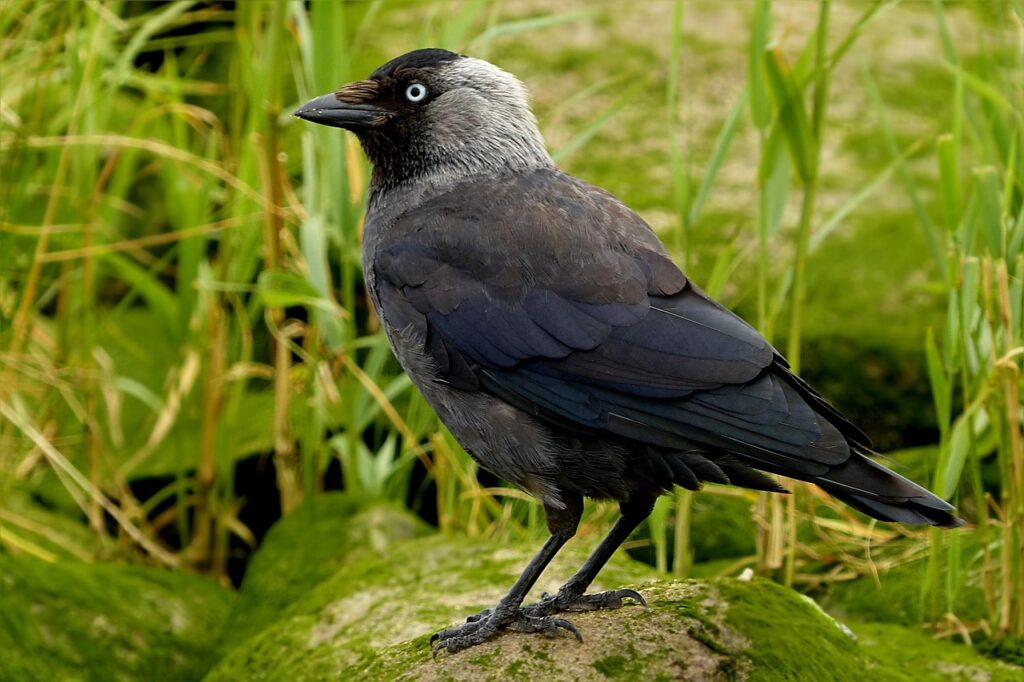Jackdaw (Kaja)

Characteristics:
The Jackdaw is a small crow species (length 33–39 cm) with a black head, light grey nape and cheeks, and a dark grey body.
It has pale, almost white eyes, which make it easy to recognise.
The bill is short and black, and the plumage often shows a bluish-grey sheen in sunlight.
It flies swiftly and directly, often in flocks together with Rooks or Crows.
Its call is a sharp “kja-kja”, from which its name is derived.
Habitat:
The Jackdaw is common in southern and central Sweden, living in farmland, towns, parks, and villages.
It often breeds in colonies, using tree holes, church towers, chimneys, and buildings for nesting.
In northern Sweden it is less common.
Behaviour:
The Jackdaw is highly social and intelligent.
It lives in pairs during the breeding season but in flocks for the rest of the year, often alongside Rooks and Hooded Crows.
It is curious and bold, and has adapted well to human environments.
Diet:
An omnivorous species that feeds mainly on insects, worms, seeds, berries, grain, and waste.
It forages on fields, lawns, rubbish sites, and in towns.
Reproduction:
Breeding takes place in April–May.
The nest is built of twigs, grass, and hair, placed in cavities or buildings.
The female lays 4–6 eggs, incubated for about 17–19 days.
The chicks fledge after 4–5 weeks.
Migration:
The Jackdaw is a partial migrant.
Southern populations remain year-round, while northern birds migrate to southern Scandinavia and northern Europe for the winter.
Distribution:
Widespread across Europe and western Asia.
In Sweden, it is common in the south and central regions, especially near human settlements and farmland.
Hunting:
The Jackdaw is a game species in Sweden according to the Hunting Ordinance (Bilaga 1).
Hunting season: 16 July – 15 April nationwide.
It is often hunted as decoy hunting or control hunting when causing crop or building damage.
Firearm class (Sweden):
The species may be hunted with:
- Shotgun, typically using pellet size no. 5–7, or
- Rifle class 4 (permitted for small game and corvids).
Think for the hunting exam:
- Small grey and black crow with light grey nape and pale eyes.
- Common in towns, parks, and farmland.
- Eats insects, seeds, grain, and waste.
- Colonial breeder, nests in tree holes and buildings.
- Partial migrant – resident in the south, migrates from the north.
- Game species – hunting season 16 July – 15 April.
- Hunted with shotgun or rifle class 4.
- Curious, clever, and social, often seen in flocks.
